442 Sqn Un Dieu, Une Reine, Un Coeur ("Caribou")
History of the Squadron before and during World War II (Aircraft: Spitfire VB, IXB, IXE, Mustang III)

[ Note that during WWII the squadron did not have a badge nor a motto. These were awarded later.]
No 442 (F) Squadron was formed in Rockcliffe, ON  as No. 14 (F) Squadron RCAF on January 2, 1942. It originally flew Curtiss Kittyhawks with the RCAF Western Air Command due to the threat to Canada's west coast after the Pearl Harbor attack. The squadron moved to Alaska and participated on strafing and bombing missions against then-Japanese held Kiska during the Aleutian Islands Campaign. The squadron was the fifth of six home squadrons transferred overseas without its aircraft, and was re-designated No. 442 (F) Squadron RCAF at Digby, Lincolnshire, UK.
as No. 14 (F) Squadron RCAF on January 2, 1942. It originally flew Curtiss Kittyhawks with the RCAF Western Air Command due to the threat to Canada's west coast after the Pearl Harbor attack. The squadron moved to Alaska and participated on strafing and bombing missions against then-Japanese held Kiska during the Aleutian Islands Campaign. The squadron was the fifth of six home squadrons transferred overseas without its aircraft, and was re-designated No. 442 (F) Squadron RCAF at Digby, Lincolnshire, UK. on February 8 1944. It flew Spitfire aircraft in offensive and defensive operations in the preparation for D-Day, and afterwards gave close support to the ground troops. They moved with the ground troops through France, the Low Countries, and Germany. In March 1945 the squadron was re-equipped with Mustang aircraft, to provide fighter cover for long-range bomber groups. The squadron was disbanded at Molesworth, Huntingdonshire, UK
on February 8 1944. It flew Spitfire aircraft in offensive and defensive operations in the preparation for D-Day, and afterwards gave close support to the ground troops. They moved with the ground troops through France, the Low Countries, and Germany. In March 1945 the squadron was re-equipped with Mustang aircraft, to provide fighter cover for long-range bomber groups. The squadron was disbanded at Molesworth, Huntingdonshire, UK  on August 7, 1945.
on August 7, 1945.
In the course of operations, the squadron flew 4954 sorties for the loss of16 pilots, of whom 1 was killed, 9 presumed dead and 4 POWs. They accounted for 56 enemy aircraft confirmed destroyed, 5 probables and 25 damaged. In ground attacks they were credited with 909 motor vehicles, 125 locomotives and 194 trains. The squadron had 1 ace: Flight Lieutenant D.C. Gordon, DFC. The squadron amassed 1 DSO, 3 Bars to DFC, 10 DFCs, 1 Croix de Guerre (France). Battle Honours were: Fortress Europe 1944, France and Germany 1944-45, Normandy 1944, Arnhem, Rhine, Aleutians 1943. Wikipedia, Kostenuk and Griffin
Maps for Movements of 442 Squadron 1944-45

MAP 1: 442 Squadron Movements 1944-45 (right-click on image to display enlarged in new tab)
|
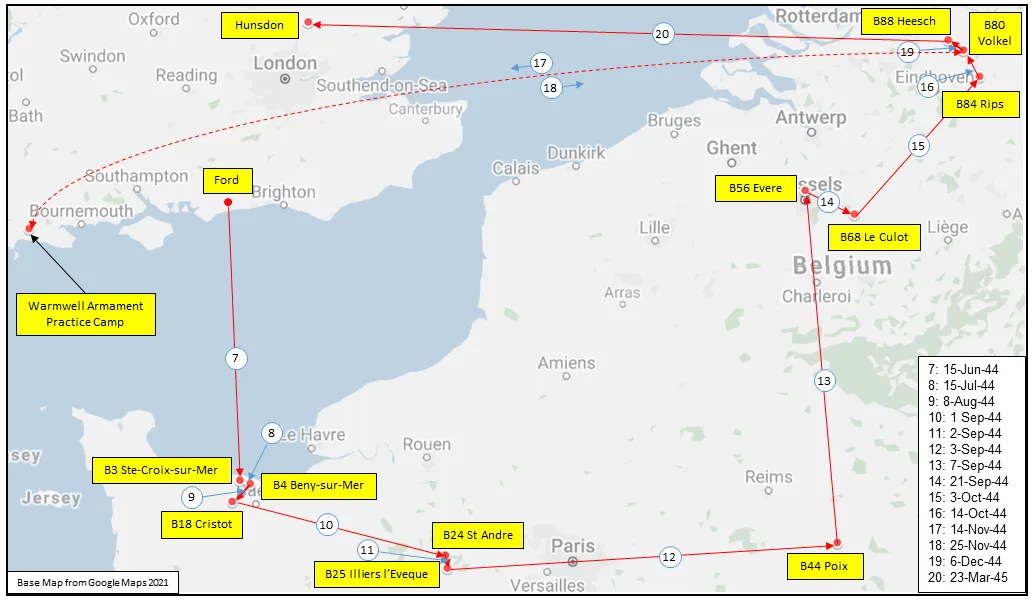
MAP 2: 442 Squadron Movements 1944-45
|
442 Squadron History Summary 1944-45
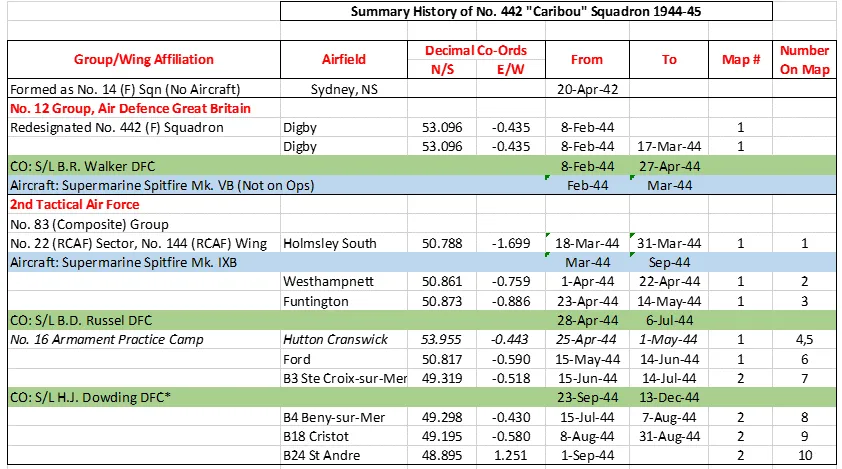
442 Squadron History Summary 1944-45 Page 2

History of the Squadron Post-WWII (Aircraft: Harvard, Vampire III, Mustang IV, Sabre 5, Expeditor, Otter, Cormorant)
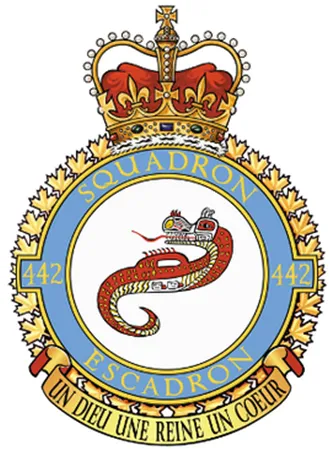
The squadron was re-formed at Vancouver, British Columbia  on 15 April 1946. It was redesignated 442 "City of Vancouver" (F) Squadron on 3 September 1952. It flew de Havilland Vampire, North American Mustang and Canadair Sabre aircraft in a fighter role until October 1958 when it was reassigned to a light transport and emergency rescue role and re-equipped with Beech Expeditor and de Havilland Otter aircraft. It was redesignated 442 Squadron. A reduction of the Auxiliary Force resulted in the squadron being disbanded on 1 April 1964.
on 15 April 1946. It was redesignated 442 "City of Vancouver" (F) Squadron on 3 September 1952. It flew de Havilland Vampire, North American Mustang and Canadair Sabre aircraft in a fighter role until October 1958 when it was reassigned to a light transport and emergency rescue role and re-equipped with Beech Expeditor and de Havilland Otter aircraft. It was redesignated 442 Squadron. A reduction of the Auxiliary Force resulted in the squadron being disbanded on 1 April 1964.
The squadron was re-formed as '442 Communications and Rescue Squadron' on 8 July 1968, from '121 Composite Unit' (authorized 1 January 1959). The squadron is based at Comox, British Columbia  , flying the CH-149 Cormorant Helicopters. The primary role of 442 Transport and Rescue Squadron is the provision of aviation resources in support of the Joint Rescue Coordination Center (JRCC) Victoria. This region consists of approximately 920,000 square kilometers of mainly mountainous terrain of Yukon and British Columbia and 560,000 square kilometers of the Pacific Ocean extending to approximately 600 nautical miles offshore, including over 27,000 kilometers of rugged British Columbia coastline. The rugged and often inaccessible terrain, severe weather, and large expanses of sparsely populated areas make the Victoria SRR the most demanding region in the country.
, flying the CH-149 Cormorant Helicopters. The primary role of 442 Transport and Rescue Squadron is the provision of aviation resources in support of the Joint Rescue Coordination Center (JRCC) Victoria. This region consists of approximately 920,000 square kilometers of mainly mountainous terrain of Yukon and British Columbia and 560,000 square kilometers of the Pacific Ocean extending to approximately 600 nautical miles offshore, including over 27,000 kilometers of rugged British Columbia coastline. The rugged and often inaccessible terrain, severe weather, and large expanses of sparsely populated areas make the Victoria SRR the most demanding region in the country.
While approximately 80 of the Squadron's personnel strength of 200 are aircrew trades, including pilots, navigators, flight engineers, and Search and Rescue Technicians (SAR Techs), the majority are maintenance personnel, charged with keeping the aircraft at peak operational readiness. On occasions when major search operations dictate the establishment of a forward operating base somewhere else in the province, 442's maintenance personnel will deploy with the aircrew, providing servicing and repairs to aircraft on site.

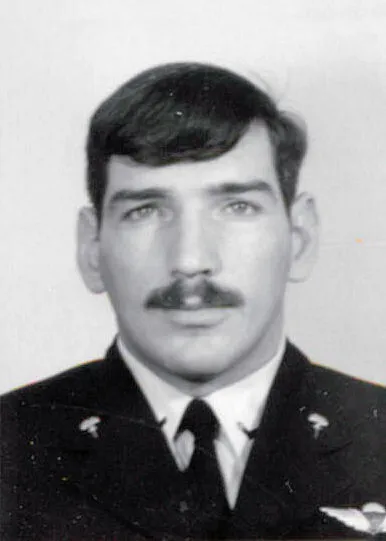

 Canadian Virtual War Memorial
Canadian Virtual War Memorial